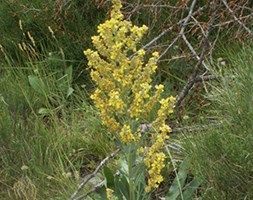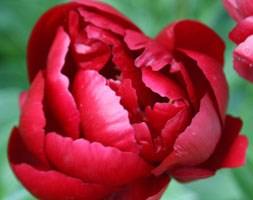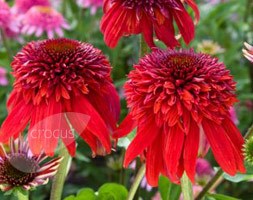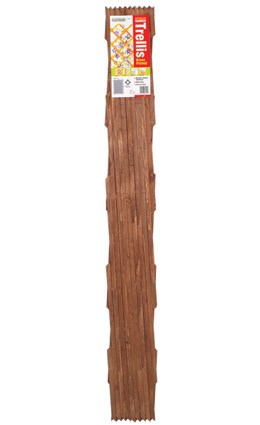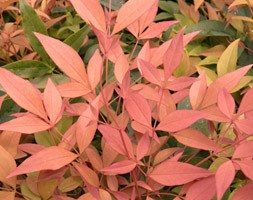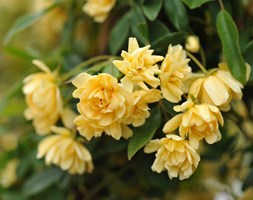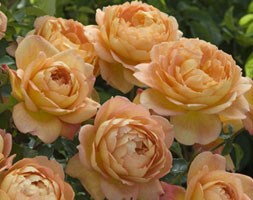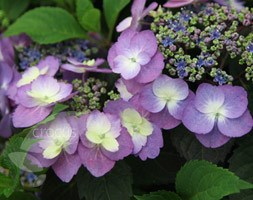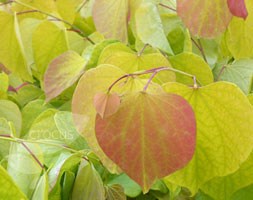Price reductions at Crocus
by Sarah - February 5th, 2014.Filed under: Crocus, Price Reductions.
Reduced price on items today at Crocus
Verbascum lychnitis (mullein) was £7.99 now £3.99
Position: full sun Soil: poor, well-drained, alkaline soil Rate of growth: average Flowering period: June to August Hardiness: fully hardy (but short-lived) The densely packed, branching flowerspike of this British native creates an impressive silhouette, which is useful for adding structure to more naturalised planting schemes. The flowers are mainly white (often with a hint of greenish yellow) and these contrast well with the silvery-grey foliage. A biennial plant that self-seeds freely, so in the right spot there will always be new seedlings coming through. An easy and undemanding plant that will thrive in chalky soils. Garden care:Apply a 5-7cm (2-3in) mulch around the base of the plant in autumn to protect from winter extremes, taking care not to cover the crown. Stake in spring with bamboo canes or twiggy prunings before the flowers appear. Mullein moth caterpillars can be a problem, pick off the insects in early June as soon as they appear. Remove faded flower spikes. It is worth keeping in mind that these plants are mainly biennial, so although they usually self-seed freely, the plant will only live for two years.
Paeonia ‘Buckeye Belle’ (paeony / peony) was £9.99 now £8.99
Supplied as a bare root plant. Position: full sun or partial shade Soil: fertile, moisture-retentive yet well-drained Rate of growth: average Flowering period: May to June Hardiness: fully hardy Slight crinkled, dark brownish-red petals surround a prominent boss of creamy yellow stamen in late spring and early summer. This sumptuously coloured, early flowering cultivar looks superb in herbaceous borders alongside plants with rich purple, red or plum coloured flowers. Garden care: Deadhead after flowering. In early spring apply a top-dressing of a balanced slow release fertiliser around the base of the plant and mulch well with well rotted garden compost or manure. If the plant shows signs of collapse or the leaves become spotty, this may be a symptom of peony botrytis. Remove affected leaves immediately. In autumn, cut off all foliage and dispose of it to prevent reinfection the following spring.
Echinacea ‘Eccentric’ (coneflower) was £12.99 now £9.99
Position: full sun or partial shade Soil: most soils, except very dry or boggy Rate of growth: average Flowering period: June to August Hardiness: hardy A marvellous new coneflower that is the first of the doubles to change colour as the flowers mature. Initially, the central ruff has a purple sheen, but as it ages it takes on an orange-red tone. It is quite possible to get lots of flowers at different stages of maturity on each plant, so the overall effect can be quite colourful. It makes an interesting addition to hot-themed borders and prairie-style plantings schemes, and it also lasts well after being cut and added to fresh arrangements. Garden care: Lift and divide congested colonies in autumn or spring. In autumn cut back all dead flower stems to the ground. Coneflowers benefit from a spring or autumn mulch with well-rotted compost.
Pinned diamond trellis was £12.99 now £9.99
A superior quality expanding wooden trellis. Each joint is secured with a pin to produce a super-strong durable trellis which needs no further treatment. Ideal for supporting even the most vigorous of climbers.
Nandina domestica ‘Magical Sunrise’ (heavenly bamboo) was £12.99 now £11.99
Position: full sun or partial shade Soil: moist but well-drained soil Rate of growth: average Flowering period: July Hardiness: frost hardy (needs winter protection in cold areas) Dwarf variety of Nandina. This is a very healthy plant with a compact, bushy growth habit. The foliage colour is unique. The plant is one of the more hardy selections. Garden care: In mid or late spring lightly cut back any shoots that spoil the symmetry of the plant.
Rosa banksiae ‘Lutea’ (rose (rambler)) was £19.99 now £14.99
Position: full sun Soil: fertile, humus-rich, moist, well-drained soil Rate of growth: average to fast-growing Flowering period: April and May Flower colour: yellow Other features: scented flowers Hardiness: frost hardy (needs winter protection) This lovely rambling rose produces graceful sprays of small, double, deep yellow flowers in April and May. Perfect for covering an arch or pergola or for growing through a strong tree, where the lightly scented flowers can best be appreciated. It is happiest in a sunny sheltered site. Garden care: If planting in winter, choose a frost-free spell when the soil is not frozen. Roses are quite deep-rooted plants so dig a deep hole roughly twice as wide as the plants roots and mix in a generous amount of composted organic matter. A top-dressing of a general purpose fertiliser can be worked into the surrounding soil and we also recommend using Rose Rootgrow at this stage to encourage better root development. This is particularly important when planting into a bed where roses have previously been grown as Rose Rootgrow is said to combat rose sickness (aka. replant disease). Before planting you will also need to make sure that there is adequate support for the rose to grow onto. Remove the plants from their pots and gently spread out the roots before placing them in the centre of the hole. Try to ensure that the ‘bud union’ (the point where the cultivated rose has been grafted onto the rootstock, and from where the shoots emerge) is at soil level. You can judge this quite easily by laying something flat, like a spade handle or bamboo cane, across the top of the hole. When they are at the right height, back-fill the hole, firming the soil down gently before watering the plant well. Tie the stems to the support in and open fan shape and as new shhots emerge, tie these in horizontally. Water generously until well established, and apply a specialist rose fertiliser (following the manufacturers instructions) each spring. They will also benefit from a generous mulch of composted farmyard manure in spring, but make sure this is kept away from the stems. When your rose has filled the allotted space, one in three of the oldest stems can be cut right back to their base. In smaller areas, remove all the stems that have flowered, tie in new stems to replace them, and then shorten the side-shoots of the remaining stems by up to two thirds. This should be done in late summe
Rosa Lady of Shalott (‘Ausnyson’) (PBR) (rose Lady of Shalott (shrub)) was £18.99 now £17.99
Position: full sun Soil: fertile, humus-rich, moist, well-drained soil Rate of growth: fast-growing Flowering period: June to September Flower colour: dusky orange Other features: excellent cut-flowers Hardiness: fully hardy Masses of lightly scented, apricot-orange blooms appear on the slightly arching stems of this bushy shrub rose throughout the summer. A tough plant that rarely succumbs to diseases, it will put on a magnificent display with the minimum of fuss. All our roses are grown in an open field and then dug up when the weather conditions are right in October or November. Some suppliers send out their roses as ‘bare root’ plants (ie without pots or compost), but we pot ours up as it helps to keep the roots hydrated and in good condition. As they are dormant throughout the winter, they will not produce any new roots until spring, so don’t be surprised if the compost falls away from the roots when you take them out of their pots. The roses can be kept in their pots throughout the winter provided they are kept well fed and watered, however ideally they should planted out as soon as possible. They will already have been cut back so no further pruning will be required, apart from snipping off any tips that have died back. Routine pruning can begin in late winter the year after planting. Garden care: If planting in winter, choose a frost-free spell when the soil is not frozen. Roses are quite deep-rooted plants so dig a deep hole roughly twice as wide as the plants roots and mix in a generous amount of composted organic matter. A top-dressing of a general purpose fertiliser can be worked into the surrounding soil and we also recommend using Rose Rootgrow at this stage to encourage better root development. This is particularly important when planting into a bed where roses have previously been grown as Rose Rootgrow is said to combat rose sickness (aka. replant disease). Remove the plants from their pots and gently spread out the roots before placing them in the centre of the hole. Try to ensure that the ‘bud union’ (the point where the cultivated rose has been grafted onto the rootstock, and from where the shoots emerge) is at soil level. You can judge this quite easily by laying something flat, like a spade handle or bamboo cane, across the top of the hole. When they are at the right height, back-fill the hole, firming the soil down gently before watering the plant well.
Hydrangea macrophylla (Flair&Flavours) Blueberry Cheesecake (‘MAK20’) (hydrangea) was £29.99 now £19.99
Position: full sun or partial shade Soil: moist, well-drained, moderately fertile, humus-rich soil Rate of growth: average Flowering period: June to October Other features: contact with the foliage may aggravate skin allergies; the flower-heads make excellent dried flower arrangements Hardiness: fully hardy The lacecap-like flowers can appear on both old and new stems, so it is possible to have a continuous supply of bloom from early summer to late autumn on this new, compact form. Like most of the hydrangeas, the flower colour responds to the soils pH, so they will be blue in acidic conditions and pink in neutral or alkaline soils. If you want lots of colour throughout the summer, then you should put this deciduous shrub at the top of your wishlist. Garden care:To enhance flowering prune in spring, cutting back the flowered stems to a strong pair of buds below each flower-head. Once established, remove a quarter to a third of the old shoots to the base of the plant.
Hydrangea macrophylla (Flair&Flavours) Cotton Candy (‘MAK20’) (hydrangea) was £29.99 now £19.99
Position: full sun or partial shade Soil: moist, well-drained, moderately fertile, humus-rich soil Rate of growth: average Flowering period: June to October Other features: contact with the foliage may aggravate skin allergies; the flower-heads make excellent dried flower arrangements Hardiness: fully hardy One of the new breed of hydrangeas, this cultivar has the potential to produce its lace cap flowers on both the new and old stems. That means that it can flower continuously from early summer, right up until the first frosts. A compact deciduous shrub, you will be able to grow it in a large pot (provided it is kept well watered), or towards the front of the shrub border. Please keep in mind that although the flowers tend to be pink on neutral to alkaline soils, they will turn bluer in acidic conditions. Garden care:To enhance flowering prune in spring, cutting back the flowered stems to a strong pair of buds below each flower-head. Once established, remove a quarter to a third of the old shoots to the base of the plant.
Cercis canadensis ‘Hearts of Gold’ (PBR) (American redbud) was £34.99 now £29.99
Position: full sun Soil: moist, well-drained soil Rate of growth: slow-growing Flowering period: March to April Flower colour: lavender-pink Other features: stunning bright-yellow foliage Hardiness: fully hardy Lavender-pink, pea-like flowers form along the bare stems of this wonderful new tree in spring, just before the foliage emerges. The growing tips of this new foliage is flushed with pinkish-orange, but as the leaves mature they become yellow, and later still, greenish. A colourful tree, which will not get too large, it will be happiest in a warm, south-facing spot. Garden care: Plant in their final location when young as they resent being transplanted. Requires minimal pruning. Remove any broken, diseased or crossing branches in late autumn or winter. When planting incorporate lots of well-rotted garden compost in the planting hole and stake firmly.







